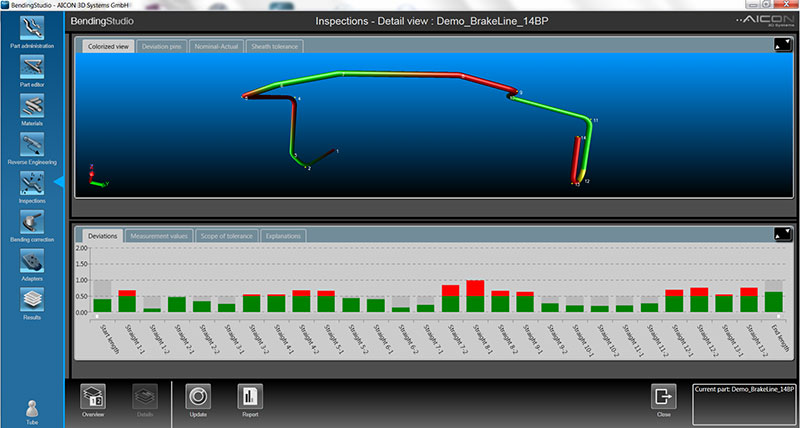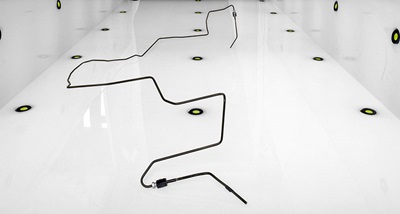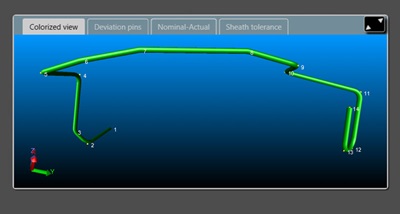Tube measuring at Daimler: TubeInspect in the automotive industry
Tube measuring with a system closely linked to bending machines
Contact us

Brake and fuel lines for the E and S Class from Mercedes-Benz are manufactured in the tube production plant in Sindelfingen, Germany. The lines, made from aluminum or steel, have diameters ranging from roughly 4 mm to 15 mm. Supplied in fixed sizes, ready-cut tubes are first provided with fittings on an automatic tube end processing machine, swaged if necessary, and then formed on bending machines. Despite their different makes and years of manufacture, the tube bending machines all have one thing in common: their quality check takes place on the AICON tube measuring machine TubeInspect.
Each day about 1,400 vehicles are equipped with brake and fuel lines from the tube production plant, in more than 400 model variants. Prototypes for vehicle development are also built here. High precision naturally plays a crucial role. "We install 11 to 12 brake lines per vehicle, and so every millimeter is important", explains Siegfried Radegast, an engineer at the tube production plant. A method was sought what would make quality checks fast and uncomplicated, while enabling any detected errors to be corrected as quickly as possible on the tube-bending machines.
 The days of expensive mechanical solutions are over
The days of expensive mechanical solutions are over
In the past, quality checks were carried out by placing formed tubes into mechanical gauges and then subjecting them to visual checks. Over time, however, this testing method proved to be extremely inflexible as well as expensive, because the gauges had to be specially built for each type of tube and altered whenever the smallest alteration in geometry occurred. Siegfried Radegast estimates the cost of a single gauge at several thousand Euros. It's also easy to understand that the test result depends to a very large extent on the operator - and this is too imprecise and time-consuming for a department with 60 employees working three shifts, where products generally have to be delivered to assembly on a just-in-time basis. The production hall contains over a dozen tube-bending machines, running all kinds of different bending programs depending on the requirements of vehicle assembly. As a result, machine retooling not only needs to be very fast, but the quality check also has to run smoothly - because a certain number of tubes from each part series must be tested and documented for dimensional accuracy.
 TubeInspect measures tubes precisely within seconds
TubeInspect measures tubes precisely within seconds
TubeInspect has been checking quality in the tube production plant at Daimler for a few years now. Instead of mechanical gauges, changes to individual tube sections can now be electronically sensed and further processed. But how does the optoelectronic measuring system work? First, the tube to be measured is placed inside the optical measuring cell and its geometry is detected by 16 high-resolution CCD cameras. The measuring volume is roughly 2500 x 1000 x 500 mm and can be extended by repositioning the tube. Bends between 5° and 180° can be detected without problems, and there is also a new measuring function for bend-in-bend forms. A color graphic monitor running under Windows provides operator guidance and visual display of the measuring results. The measuring results can be recorded in a database and documented on a color inkjet printer during the actual measuring process. "Operating the measuring system is quite easy", says Siegfried Radegast. "Making bend corrections in the CNC program is the only thing that requires special training."
